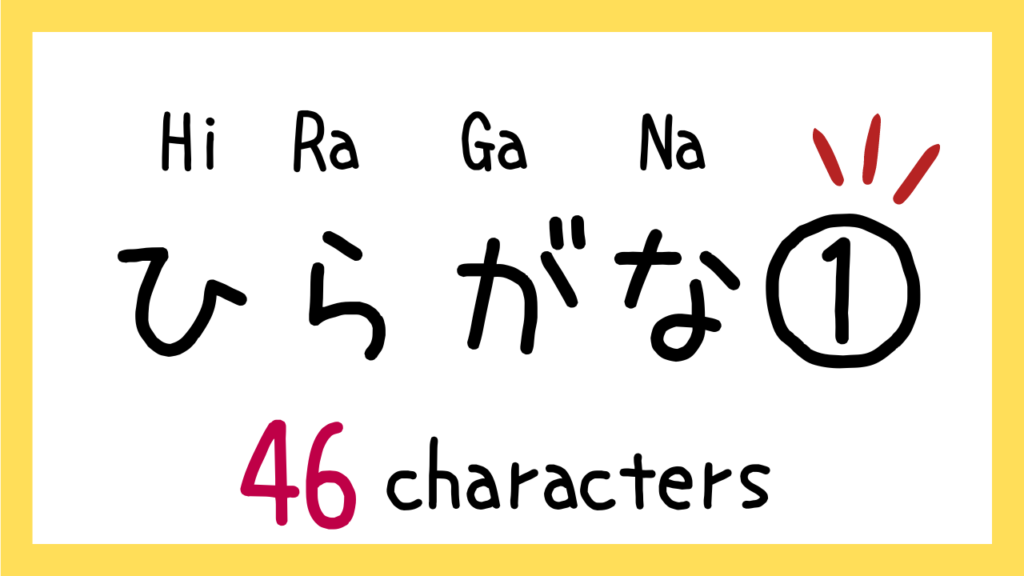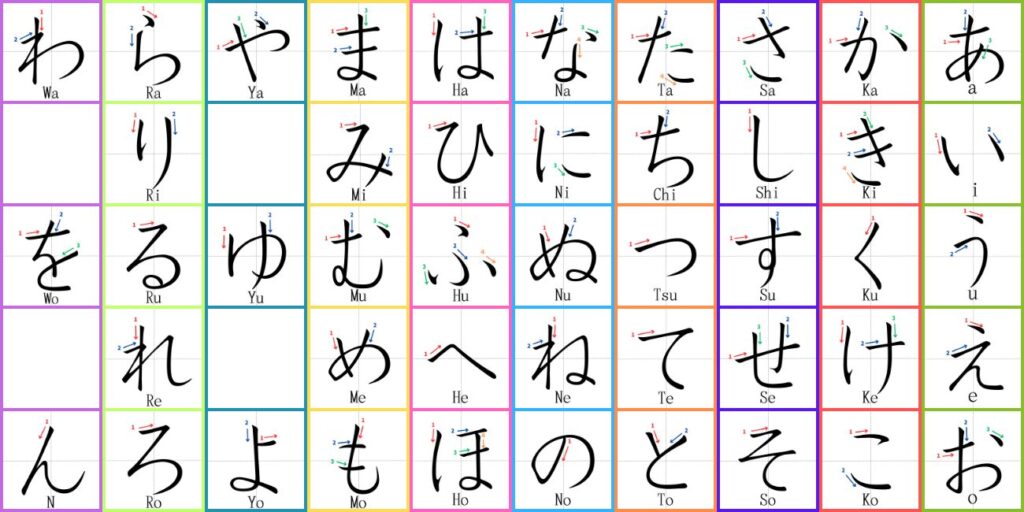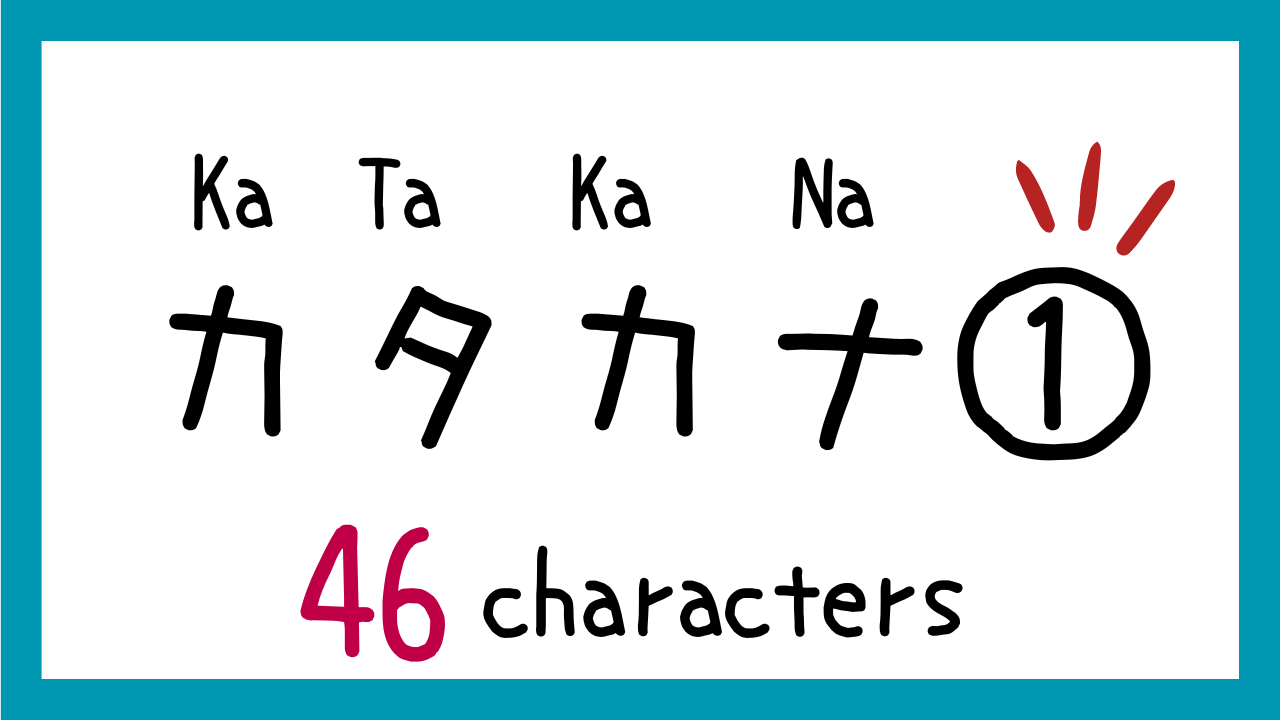
Hiragana (ひらがな) is one of the three writing systems used in the Japanese language, alongside katakana and kanji.
Contents
Key Points About Hiragana
- Origin and Use: Hiragana was developed from simplified Chinese characters and was originally used by women in the Heian period. Today, it is primarily used for native Japanese words, grammatical functions, and for words without specific kanji.
- Phonetic Structure: Hiragana consists of 46 basic characters, covering every sound in the Japanese language. Each character corresponds to a consonant-vowel combination (except for vowels and "n" ん):
・あ (a), い (i), う (u), え (e), お (o)
・か (ka), き (ki), く (ku), け (ke), こ (ko), etc. - Grammar: It is also used for particles (e.g., は, が, へ), verb conjugations, and suffixes. For example, verb endings and conjugations such as ます (masu) are written in hiragana.
- Children and Learners: Hiragana is typically the first script taught to Japanese children and is also essential for beginners learning Japanese as it provides the foundation for reading and writing.
- Use with Kanji: When kanji characters are used, hiragana often accompanies them to provide grammatical endings or readings, especially in texts aimed at learners or younger readers. This is known as furigana.
Hiragana Table

あ行 a,i,u,e,o





か行 ka,ki,ku,ke,ko





さ行 sa,shi,su,se,so





た行 ta,chi,tsu,te,to





な行 na,ni,nu,ne,no





は行 ha,hi,hu,he,ho





ま行 ma,mi,mu,me,mo





や行 ya,yu,yo



ら行 ra,ri,ru,re,ro





わ行 wa,wo,n



